By Jason Murphy
2021 is an exciting time for ME/CFS science in Australia. Money is flowing. That means in time, research results will also flow. Australian labs are gearing up to do the work to deliver insights into the cause of ME/CFS and, most importantly, possible treatments.
Australia’s National Health and Medical Research Council (NHMRC) last year allocated $3.3 million for ME/CFS research. That money was split three ways, and a third of it went to a man named Ken Walder.
Professor Walder lives in the charming seaside town of Ocean Grove in Victoria with his family and two dogs, Daisy and Jack. To find him however, you’d be best looking in the lab. Walder is the Chair of Metabolic Diseases at Deakin University, and he is most often hard at work on the Waurn Ponds campus, a sprawling collection of buildings plonked down next to cow paddocks a 30-minute drive from his home.
It’s not the most obvious place to conduct cutting-edge research, but Walder likes it.
“Compared to some of the other places I’ve been what I like about Deakin is it is a very collaborative and collegiate place,” he says.
He has enough experience to know a healthy research environment when he sees one. Walder, who is named as inventor on 40 patents and author on over 150 academic papers, has had an extremely productive career that has taken him to the prestigious US National Institutes of Health before returning to Deakin University.
His latest foray into ME/CFS research is new for him, but it is a natural extension of his intellectual curiosity.
“My motivation is around understanding metabolism,” Walder says.
Previously, Walder worked in diabetes and obesity, two diseases where metabolic issues are central to the problem. He is fascinated by mitochondria.
“Our hypothesis … is there may be a systemic problem with the ability of the mitochondria to produce the energy the body needs to function and that leads to feelings of fatigue as well as some of the other symptoms people with ME/CFS get,” he says.
THe title of his NHMRC grant was: “Using ‘omics to unravel the pathophysiology and repurpose drugs to treat ME/CFS“. I asked him what that means.
The process starts wide: looking at what is going wrong in ME/CFS cells, and ends up narrow: testing drugs to see which ones can best reverse those changes. Walder says the research starts with a frank admission of ignorance.
“There may be a systemic problem with the ability of the mitochondria
to produce the energy the body needs to function”
“We don’t know what causes ME/CFS. What we want to do is create a model system so that we can compare ME/CFS versus healthy control cells and look as broadly as we can.”
Walder will use techniques that give a big picture view of what is happening in the cell. Prime among them is “transcriptomics” which tracks which genes the body is turning on and off to see what biological processes are going on.
“What we want to do is create a model system so that we can compare
ME/CFS versus health control cells”
The Model
One strength of Walder’s work is it will test the most energy-hungry cells.
“In the past in ME/CFS research, which has been really underfunded for a long period of time, people do what they can. People have taken white blood cells,” he says. “The problem with that is white blood cells are not a highly energetic cell. They spend most of their time just cruising around in a fairly relaxed phase.”
Professor Walder prefers to focus on cells that use most energy: skeletal muscle and brain. These are obtained not directly (you can’t obtain patients’ brain cells safely!) but by the use of stem cells.
Here’s how it works: take white blood cells, turn them into stem cells, and then turn those stem cells into either cortical networks (Walder: “We call it brain in a dish”) or skeletal muscle cells (“You look down a microscope and see the fibres contracting”).
Then they stress the cells to see how they react.
“While there may not be an obvious difference at baseline, when you stress the cells you might see that they are unable to respond appropriately.”
This process of transformation, of course, comes with some risk that the key factors are lost, Walder admits. “If there’s 20 abnormalities present and you take the cells through this process, you could lose half of them,” he says.
Still, the process has shown results in the past. “I can tell you we did this in diabetes and it worked, and we sold the intellectual property for that to a US biotech company that is still developing the technology … This work is NHMRC-funded so we are not specifically looking to commercialise anything; we are looking to find something that will help participants with the disease.”
Drug testing
For ME/CFS patients the most exciting aspect of Walder’s work is that it culminates in drug testing. After Walder and his team learn how to stress and dysregulate ME/CFS cells, the grant will fund the use of 1300 well-known, off-patent drugs to see which is best at restoring the cells to looking like healthy control cells.
Walder considers it likely that several drugs will show promise. If they do, then the option exists to proceed to trials on patients.
“If we find a drug that makes ME/CFS cells look like healthy control cells, we immediately know what its safety profile is, what the dosage regimen that works is, any drug-drug interactions that we might need to be careful of, and because it has already been approved and marketed you can go straight to a Phase 2 trial.”
Walder works closely with a scientist named Michael Berk who runs a lot of clinical trials. That means the transition from the lab to the clinic will be faster, and patients could be part of a trial to take an experimental drug by the end of the decade.
Of course, clinical trials don’t come cheap. “We will be talking to philanthropy, we will be talking to industry and we will be writing grants for government funding,” says Walder. For further progress in research, it’s necessary for money to continue to flow.
About Jason Murphy:
Jason Murphy is a freelance journalist and economist who began his career in the Federal Department of Treasury before moving onto journalism. Now Jason’s work can be found all over the internet in the Australian Financial Review, News.com.au, The Advertiser and many other Australian news outlets. Jason excels in taking complex information and breaking it down for readers to give a better understanding of intricate systems to the public.







